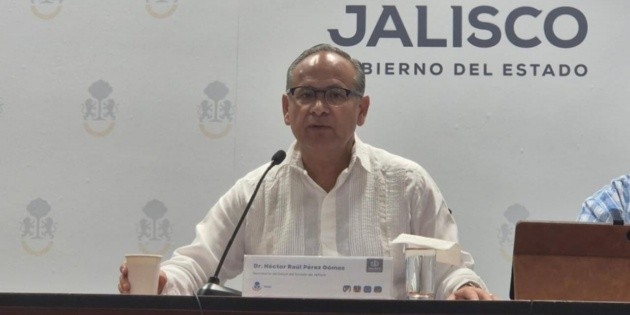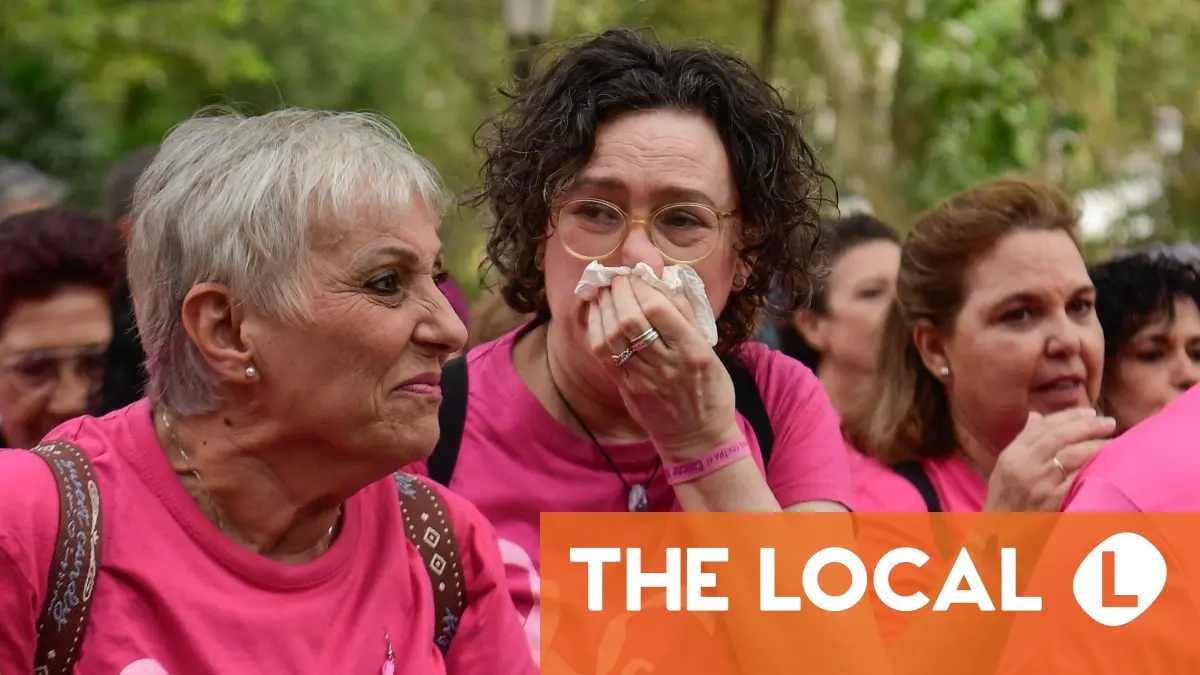The neuroscientist who had a near-death experience and is now investigating the afterlife: "There's no evidence it doesn't exist."
Álex Gómez Marín (Barcelona, 44) believes in the usefulness of family constellation therapy for overcoming trauma, that it's possible to speak with deceased relatives through a medium, and that there are indications that reincarnation is a reality. He also holds a PhD in physics and has had a successful scientific career, with more than 100 articles published in journals ranging from theoretical physics to neurobiology, including cognition and human consciousness. This led him to become a senior scientist at the CSIC and to direct his own laboratory, the Organismal Behavior Laboratory at the Institute of Neurosciences in Alicante. Now, his laboratory is empty, and he is the only member of the team; he receives almost no funding, and none through the usual channels.
Gómez Marín was never satisfied with the answers provided by the worms, flies, or mice he worked with, nor with the narrow, limited questions that science typically requires to obtain reliable results. He was never a materialist, at least not entirely, but an experience made him definitively abandon that scientific approach. In 2021, uncontrollable bleeding in his stomach brought him to the brink of death. According to the scientist himself, even beyond. Since then, he sought to explore a new path of knowledge that would address fundamental questions about life, death, and consciousness that often remain beyond the reach of conventional science.
“I was in a well (a well very similar to one I know well). I looked up. I saw three figures waiting for me lovingly in the light. This one was yellow (similar to that of the mythological animals of the inner encounter). The contours of each of these figures' faces and hair were perfectly outlined against the light. Their heads formed a perfect triangle in the circle of the opening. I knew who each of them was; they weren't deceased relatives, but spirit guides. I felt no fear. They offered me a kind of reed to climb out of the well.” This is how Gómez-Marín recounts his life-changing near-death experience in The Science of the Last Threshold , a recently published book in which he questions the narrow-mindedness of science that doesn't accept these phenomena as a subject of study.
In an interview at the Casa de Fieras in El Retiro Park in Madrid, he explains that he has completed his animal research and is now working with humans. "Many of these experiments can't be done in a laboratory, and we collaborate with hospitals to be able to conduct, for example, studies of near-death experience testimonies," he explains. Now, he says, he conducts research as cheaply as possible, "because in this country it's still difficult to obtain funding to study consciousness, and even more so, topics that are on the fringes." And he consoles himself with the thought that "often, the bulk of the funding goes to maintaining your mice or having microscopes, and we don't need that."
When asked about dreams, he says, "If I had a lot of money, I would create an Institute for the Study of Consciousness," because currently, scientists interested in these topics are "hidden in different institutes. Neuroscience in Spain has a legacy from Cajal—very focused on anatomy, molecular science, on the minuscule—and I'm at the other extreme: consciousness. An institute would allow us to bring together not only studies on NDEs (near-death experiences) but many other marginal and varied experiences. There's a history of parapsychological studies in Spain—people who did it well in their spare time—if it were professionalized, we could separate the wheat from the chaff," he suggests.
In his book, Gómez Marín speaks of people who believe in life after death or in paranormal phenomena as a minority he wants to help come out. However, the reality is that a large portion of the population believes that death is not the end. He acknowledges this: “Yes, in reality we are the majority, but a silent majority who, in school or in the media, encounter this materialistic, orthodox scientific vision. When people go to science to look for answers on these issues, because they no longer look for them in religion, they have encountered a somewhat dismissive response: How can you believe in this? And those people have felt small.”
The premise Gómez Marín works with is that, unlike what the most accepted neuroscientific theories about consciousness propose—as an emergent property arising from the brain, where neural processes generate our thoughts or emotions—this organ is actually a kind of filter for a consciousness that exists in the universe independently of the brain. According to Gómez Marín, this hypothesis would explain phenomena such as near-death experiences, which occur when there is no brain activity, or some experiments with psychedelic substances, in which consciousness expands when brain activity decreases.
The Barcelona researcher was transformed by his journey to the brink of death, but he maintains that he works from a place of doubt. “I realize that, personally, I have experience and a feeling that weighs heavily, but as a scientist, I must maintain methodological doubt. In my book, there are sections where I say, ‘It looks good,’ or ‘There is evidence that points in that direction,’ but I don’t assert metaphysical certainties. Some hypotheses are very complicated and cannot be disproved with a single experiment. I’m not saying that science proves that when you die, you’ll go to heaven. What I am saying is that for a long time, in the name of science, it has been said that believing in these experiences was madness. There has been a kind of materialist conceptual dictatorship that has closed the space for research. Now I am content with having two options on the table: that of the brain as the producer of consciousness and that of the brain as the permissive one.”
The interest in the afterlife is eternal, but perhaps more recent is the need to scientifically demonstrate its reality. The successes of materialistic science, from the formulation of the law of gravity to the creation of cancer drugs, have turned science into an almost irrefutable source of authority. People have long believed in all sorts of improbable mysteries without needing to verify them, but now they also look to science to endorse what, from subjective experience, feels true.
Manuel Sans Segarra, a retired Catalan surgeon who has gained fame by defending the existence of a superconsciousness that survives our death, writes the prologue to Gómez Marín's book. With his usual mishmash of arguments in which he recalls his patients' near-death experiences, criticizes the idea that science is considered the only means to achieve knowledge, and relies on quantum scientific theories that are light years away from empirical proof, Sans Segarra displays much greater confidence in the final outcome of this journey than Gómez Marín. Although there is no evidence that superconsciousness is real, the prologue writer claims that scientific proof has already been provided .
One thing that has been proven is that many people who experience near-death experiences return transformed. They feel less fear of death, more connected to other people or nature, and more hope. Furthermore, as Gómez-Marín himself comments, the experience is experienced as something "hyperreal," very different from a dream. This benefit is one of the motivations of those who want to demonstrate with new science that the phenomenon is not a hallucination and a factor that casts doubt on the ability of these scientists to assume, if such an experiment were possible, that when the brain disintegrates, no type of consciousness survives. "For a long time, science has instilled hopelessness. In the name of science, people used to say: 'When your grandfather dies, that's it, you'll never see him again; this is a scientific fact.' No, my dear friends, in the name of science, you can't say that," says the researcher, who laments: "We come from a desert of hopelessness."
In the conversation with Gómez Marín, a common conflict arises between those who adhere to materialistic science and those who believe there is something beyond, whether it be the God of Christianity or a superconsciousness outside of organized religion. The scientist rightly points out the limited success of conventional science, which focuses only on what is measurable and treats humans as complex machines, in explaining consciousness, and even the rejection that, since the time of Galileo, this highly successful science has had of the subjective experience of being alive. However, neither the gaps left by cosmological theories that assume God had to exist to create everything, nor the shortcomings of neuroscience, are proof that near-death experiences are a real visit to the threshold between life and death.
Spiritualism and visits to the 'Cuarto Milenio'Gómez Marín's need for hope, and his acceptance of all kinds of paranormal phenomena, opens the door to practices such as spiritualism. Although the ability of mediums to communicate with the dead has been ruled out by all kinds of experiments, Gómez Marín believes we shouldn't close ourselves off to the possibility that there may be some real mediums. "What if there is?" he asks. "And if there are people who contact real spirits, and a person who needs to contact their deceased relative actually does, who are we to tell them not to? There are also con artists among lawyers and journalists," he concludes.
Gómez Marín alternates visits to Cuarto Milenio , a program that mixes proven scientific messages with crude fabrications or far-fetched conspiracy theories, with publications on the theory of consciousness in a prestigious journal like Nature Neuroscience . This apparent inconsistency is not unlike that of great figures who led the scientific revolution, such as Newton or Kepler. The philosopher John Grey states that “modern science begins when observation and experimentation come first, and the results are accepted even if what they show seems impossible.” In his essay The Commission for Immortalization , Grey writes: “Paradoxically, scientific empiricism—relying on real experience and not on supposedly rational principles—has very often been accompanied by an interest in magic.” However, in the absence of new methods being designed to test the nature of reality, for now, the hypothesis that the brain does not produce reality, but rather filters it, seems as difficult to test as string theory .
Carl Sagan famously said that extraordinary claims require extraordinary evidence. The idea comes from philosopher David Hume's argument about miracles, included in his 1748 Enquiry Concerning Human Understanding. In it, Hume argued that "no testimony is sufficient to establish a miracle, unless the testimony be of such a nature that its falsity would be even more miraculous than the fact it attempts to establish." The Scottish skeptic's statement leaves much room for subjectivity. For Sagan's audience, it was likely obvious that evidence for miracles or the survival of consciousness was nothing extraordinary. For a believer, however, a tiny sliver is enough to grasp the existence of the supernatural.
EL PAÍS




